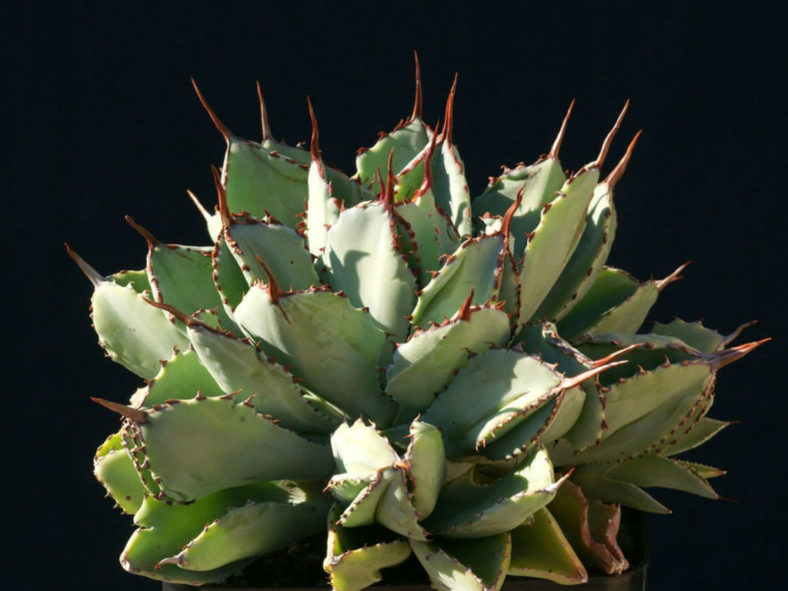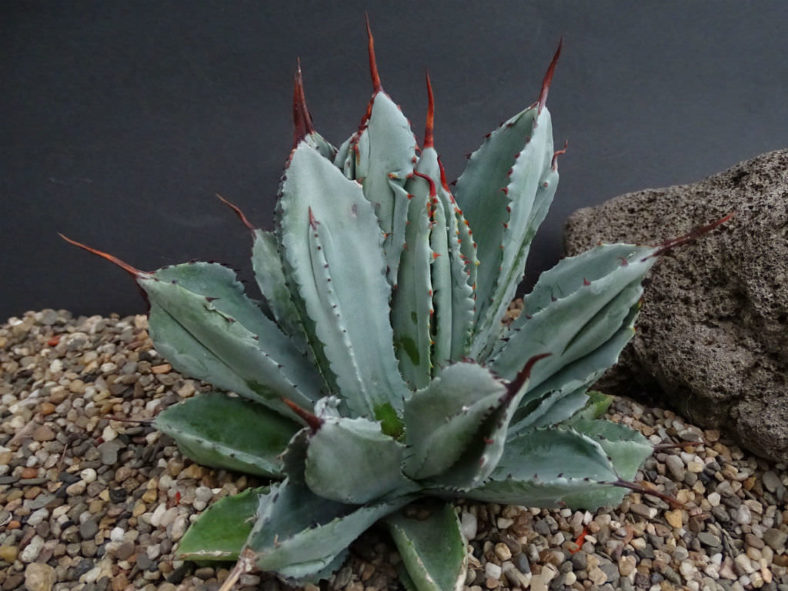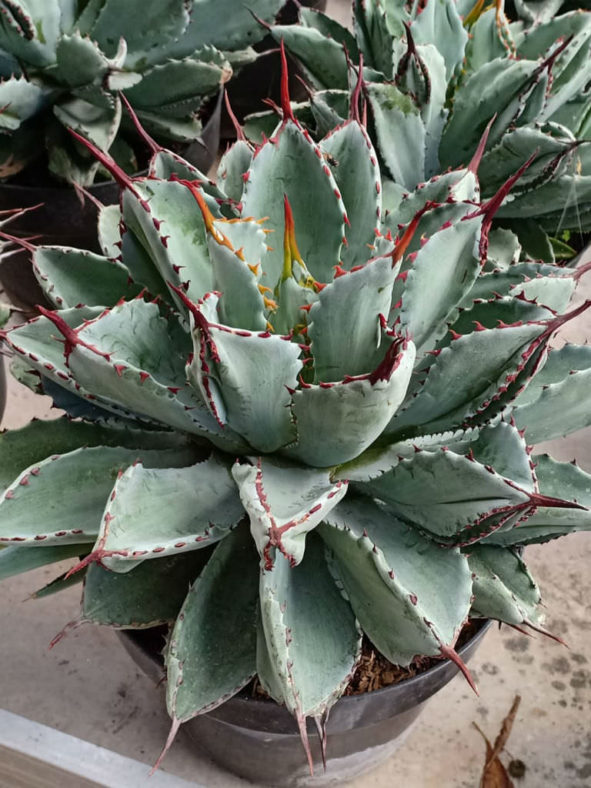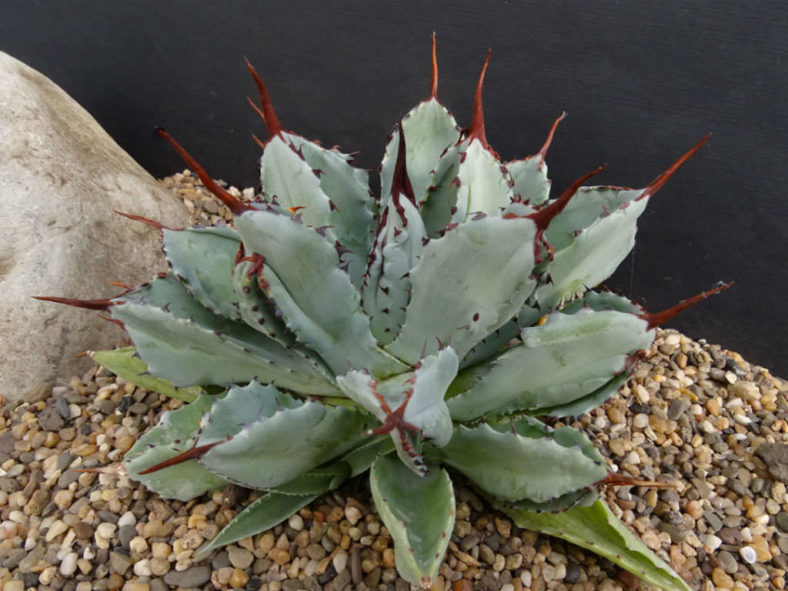Scientific Name
Agave potatorum 'Cubic'
Synonym(s)
Agave 'Cubic', Agave potatorum f. monstrose
Scientific Classification
Family: Asparagaceae
Subfamily: Agavoideae
Genus: Agave
Origin
There is very little information about the selection history and origin of this monstrose cultivar of Agave potatorum, and most are conflicting information.
Description
Agave potatorum 'Cubic', also known as Agave 'Cubic', is a unique succulent that forms compact rosettes of thick, fleshy leaves with ridges on the back of most of them, giving them a three- or four-angled appearance. The leaves have a long, sharp terminal spine and dark reddish-brown teeth that may grow on all sides. The rosettes slowly grow, reaching up to 12 inches (30 cm) in height and 18 inches (45 cm) in diameter.

How to Grow and Care for Agave potatorum 'Cubic'
Light: These plants require full sun to part shade. If you are growing Agaves indoors, choose a bright, sunny window with as much sun as possible. Agave plants love going outside from spring to fall.
Soil: Agaves will tolerate most soils as long as they have good drainage but prefer sandy or rocky soil.
Hardiness: Agave potatorum 'Cubic' can withstand temperatures as low as 25 to 50 °F (-3.9 to 10 °C), USDA hardiness zones 9b to 11b.
Watering: Mature plants are very drought tolerant. From spring to fall, water thoroughly your Agave when the soil mix becomes dry. In winter, water sparingly about once a month. Plants in containers require more frequent watering than those in the ground.
Fertilizing: Give your Agaves a small amount of fertilizer in the spring during the first two years.
Repotting: The plant has become pot-bound when the pot becomes full of roots. If you notice your Agave becoming pot-bound, repot it with new soil in a pot slightly larger than the old one.
Propagation: Since it can take years to produce seeds, Agaves are usually propagated by offsets.
Learn more at How to Grow and Care for Agave.
Toxicity of Agave potatorum 'Cubic'
Agave potatorum 'Cubic' is not a toxic plant but may be mildly poisonous to children and pets.
Links
- Back to genus Agave
- Succupedia: Browse succulents by Scientific Name, Common Name, Genus, Family, USDA Hardiness Zone, Origin, or cacti by Genus
Photo Gallery
Click on a photo to see a larger version.


